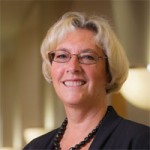This article is more than 5 years old.
Here is summary information on the othercontributedsessions I attended at CNI last week. The organization will post fuller descriptions and some video shortly.
“Competing Priorities: Sustainability, Growth, and Innovation in Digital Collections,” Jenny Riley, Head, Carolina Digital Library and Archives, UNC-CH. The room was full to overflowing so it was apparent that many felt the same as the speaker that the growth of digital collections in libraries has been somewhat unplanned, haphazard, and siloed. The goal at UNC is to move from project to program with their digital collections, using a modular approach to interoperable systems. They are currently trying to decide if they should move forward with their Omeka pilot. An overall goal is to bring the content and the technology together (an admirable goal for us all, and somewhat comforting to learn that we are not the only ones who have not found the solution yet).
“Open Source Sustainability: A DuraSpace Update,” Jonathan Markow, DuraSpace. DuraSpace is the not-for-profit organization that provides both D-Space and Fedora. I attended this session because last year we were approached byDuraSpace to become a “sponsoring” member, though we have not taken action on it yet. The speaker reviewed different governance models for open source projects, as they become more widespread. Sustainability is the big issue. Both DSpace and Fedora have great depth and breadth globally and are still growing. Kuali was mentioned several times as being a pay-to-play model, which we have seen with the Ole project. Also heard parenthetically that Sakai will be merging with Jasig. I was interested in the DuraCloud service, as I have always thought there is a market for a trusted brokered service provider for the cloud. Even with a mature organization like DuraSpace, they are still seeking the right management model at a price the market can bear.
“DMPTool,” Todd Grappone, UCLA. DMP=Data Management Plan Tool. Data management is a very hot topic in research libraries. A group of libraries formed a partnership to develop a web-based solution that acts as a guided template for data management plan development. Most of the session was spent by the speaker asking the audience how much they would pay for such a tool. They are looking for the right governance model (pay-to-play, volunteer, etc.) It seems to me a curious strategy to ask the user community to come up with a price and model without offering up something first.
“Interoperating Requirements for a Media Specific Repository: ARTstor,” Representatives from Harvard and UVA described how they used Shared Shelf, a cloud-based cataloging and image management repository built by ARTstor. Both institutions have a large number of images across the campus that need a specific solution. The best thing about this presentation was that William Yin, Chief Information Officer for ARTstor, has a son who is a first year student at Wake Forest and he promised to come visit ZSR when he is on campus next.
“Open Source Content Management for Digital Archives,” Eric Weig, University of Kentucky. I have heard Weig speak before and he is doing very good things at Kentucky. He has found a way to automate the connection of metadata to objects from mass digitization. They take a finding aid and drop it into this tool which generates a directory tree for digitized objects. They have four programmers working on this project.
The final keynote speaker was Phillip Long from the University of Queensland and his topic was “Key Trends in Teaching and Learning: Aligning What we Know about Learning to Today’s Learners.” This talk started with an overview of the Horizon Report and then went on to describe and illustrate some gee-whiz technologies that may (or may not) prove themselves to be disruptive, defined as technology that tends to separate things that were previously thought to be inseparable.
Overall, I was very glad we made the investment in CNI and I look forward to the next session in December!

3 Comments on ‘CNI Part Two’
The Eric Weig ‘content management for digital archives’ tool sounds promising-it seems like we have similar issues in Special Collections. I doubt 4 programmers is an option though.
I would love to meet the ARTstor guy! That is a really nice resource.
And do you have any more details on NCDigital’s Omeka decision-making process? Pros and cons?
What great sessions, Lynn! I’m glad to hear more about modular approaches to interoperable systems for digital collections. The last speaker sounds like he would have been saying things that would have resonated with some local discussions here as well. And I’m glad to know he mentioned the Horizon Report. 😉